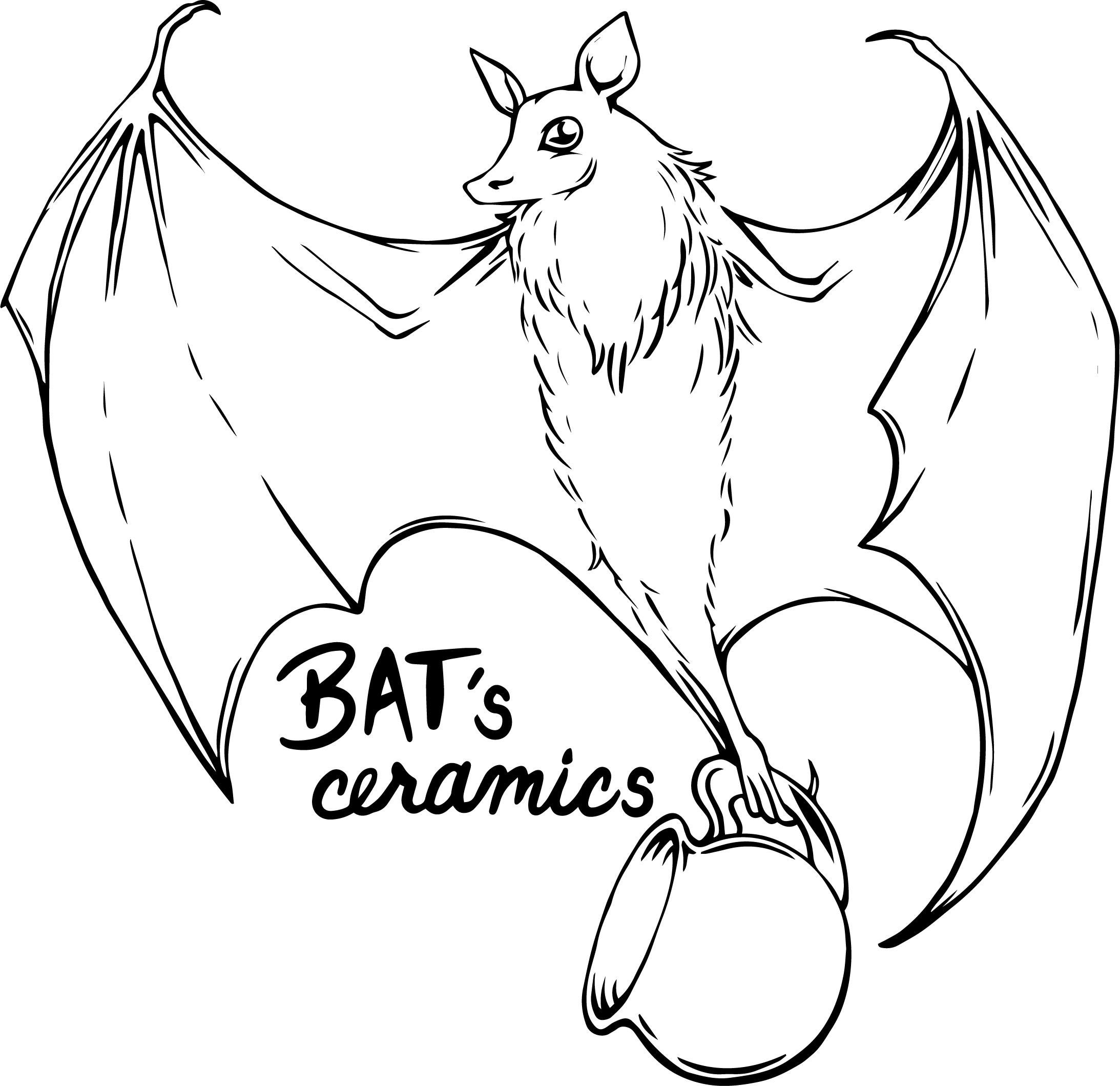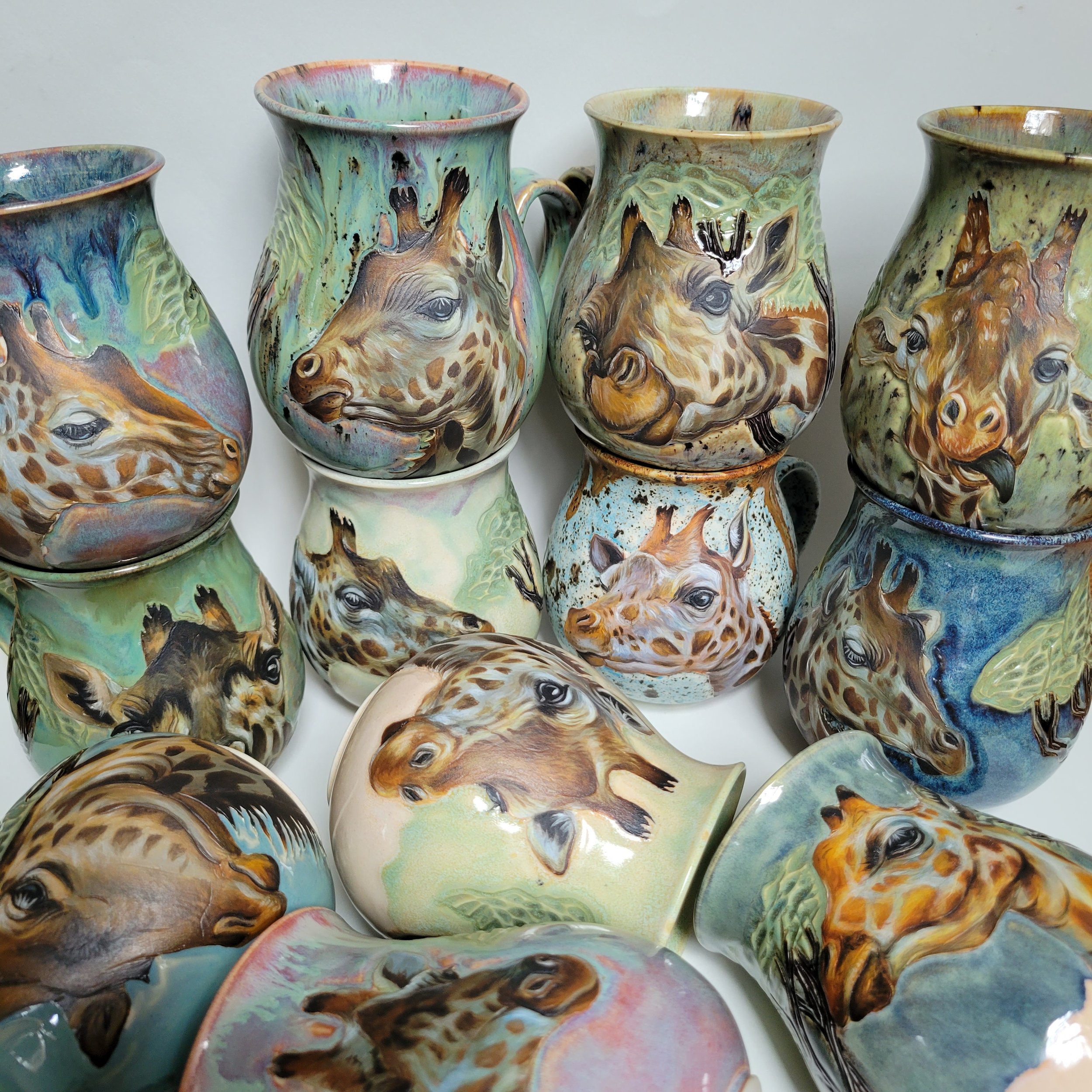GIRAFFE
August 2022
Once upon a time, a follower of mine suggested I paint giraffes to teach people about the 9 different species. I don’t normally do what others suggest, but when I do, I make the most of it! I like to focus on a flora and fauna from a specific region or weather/temperature which coincides with the same time of year I’m in. Giraffes are from a warm weather region, and I created this collection during the hot summer.
It was really fun to paint giraffes! I enjoyed their patterns and learning about them through the research I did. Painting by color shadow then placing the spots on top was the only way for me to achieve the giraffe’s fur. It was nice to paint an animal I would’ve never considered on my own. Now I can say I have a fondness for giraffes that I didn’t before, so thank you to the person who suggested it!
Along with the painted giraffe mugs I also created many carved and expressively painted giraffes, and monstera leaf mugs. The backsides of all the giraffe mugs have carved acacia trees, which is one of their food sources.
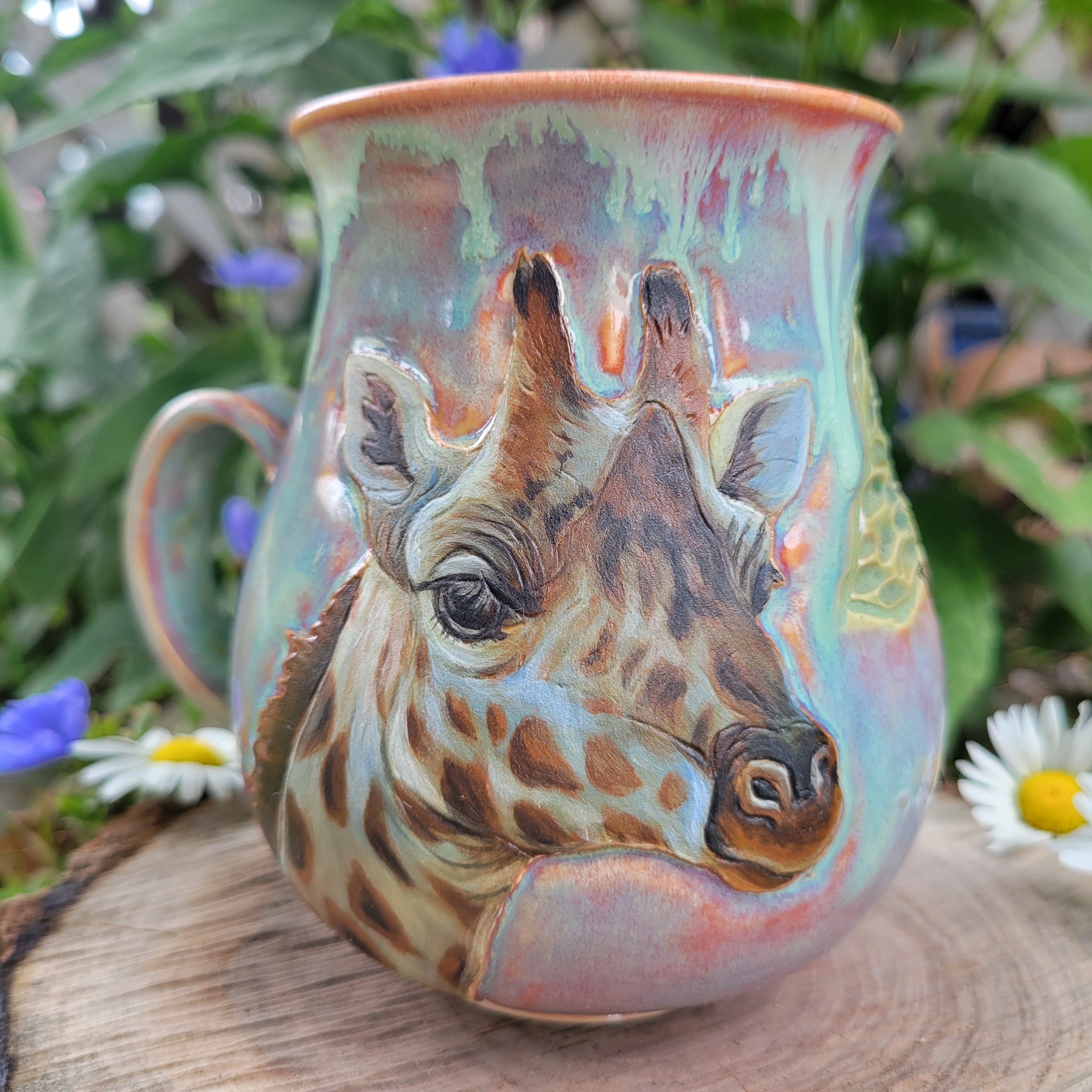

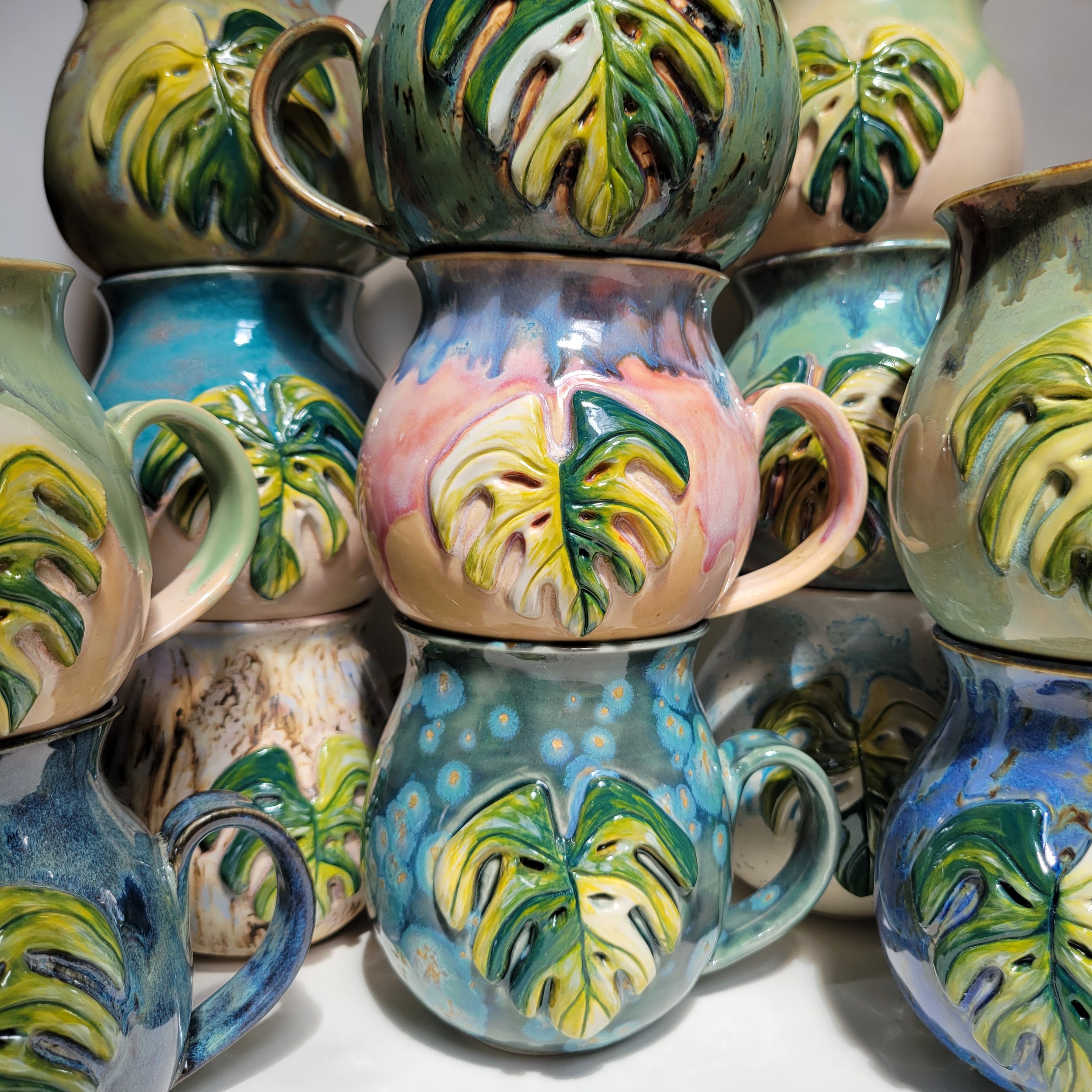
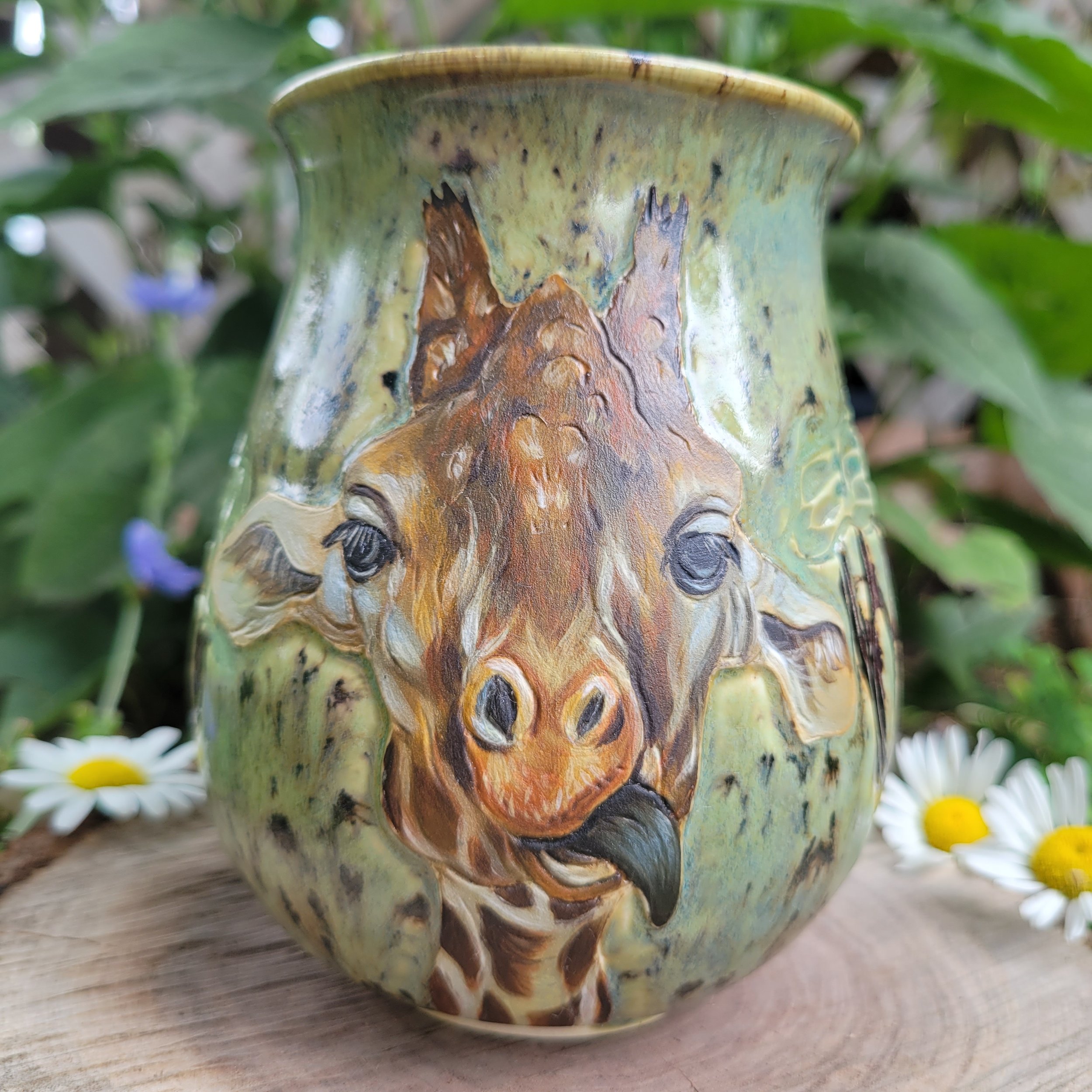
Fun facts about giraffes-
50% of giraffe calves (babies) do not survive the first year of life.
Giraffe’s legs are so long but their neck is shorter making it hard to reach the ground for water. They have to spread their legs to reach down.
Giraffe’s only drink water once a few days, even if water is available.
To protect the giraffe’s brain from sudden changes in blood pressure, when it drinks, the jugular veins have elastic walls and large one-way valves that allow the veins to expand to prevent blood flowing to the brain too fast when their head is lowered. Imagine us when we get up too fast!! Their head is going a long distance!
Alternatively, to help fight gravity, when blood returns to their heart from their feet, blood vessels are thickly walled in their legs acting like giant compression socks. These adaptations have been studied by NASA for inspiration for space suits.
Hearts weigh 11 kilograms (almost 25 pounds, imagine your thanksgiving turkey!) Even though they have a huge heart, their resting heart rate is 40-90 beats a min.
There are four distinct species: Masai, Northern, Reticulated and Southern.
There are multiple sub-species: Angolan, South, Nubian, Kordofan, Rothschild, Luangwa (Thornicroft)
Some species have been known to hybridize in zoos but little to no evidence they hybridize in the wild.
Evidence shows that 30-50 million years ago there was a three-meter-tall antelope like animal roaming forest of Asia and Europe who is the forefather of the Giraffidae family- giraffes and okapi.
Giraffe’s “horns” are actually ossi cones which are boney projections of the skull covered in fur.
When giraffe’s fight for dominance they stand parallel to size each other up then deliver heavy blows with their heads, also called a neck fight. Fatal combat is rare but can occur.
Spot patterns are used as camouflage but underneath each patch there is a system of blood vessels which regulate body heat.
Tongue is a large dark colored to protect it from the sun exposure while eating.
When born, baby giraffes fall 6 feet to the ground which kick starts their energy to stand up. (Talk about an adrenaline rush!)
Giraffe mothers will leave their babies in tall grass to feed or leave their baby with another mother to baby sit.
